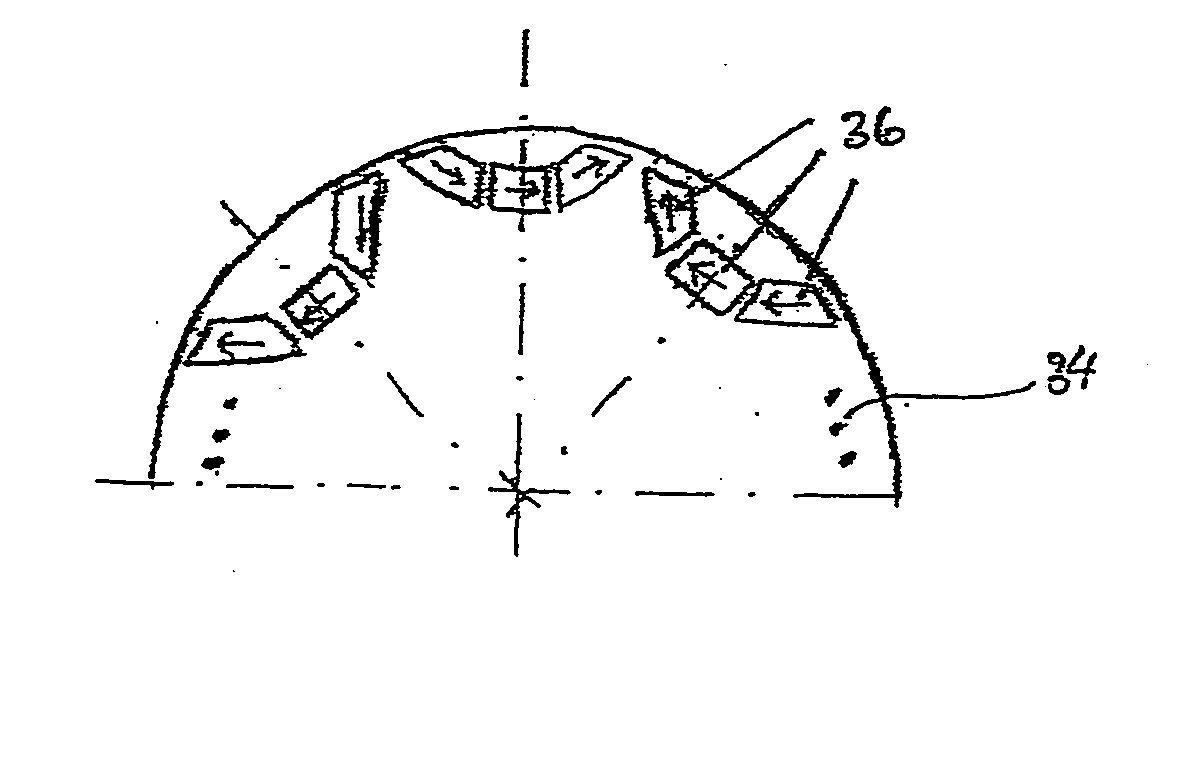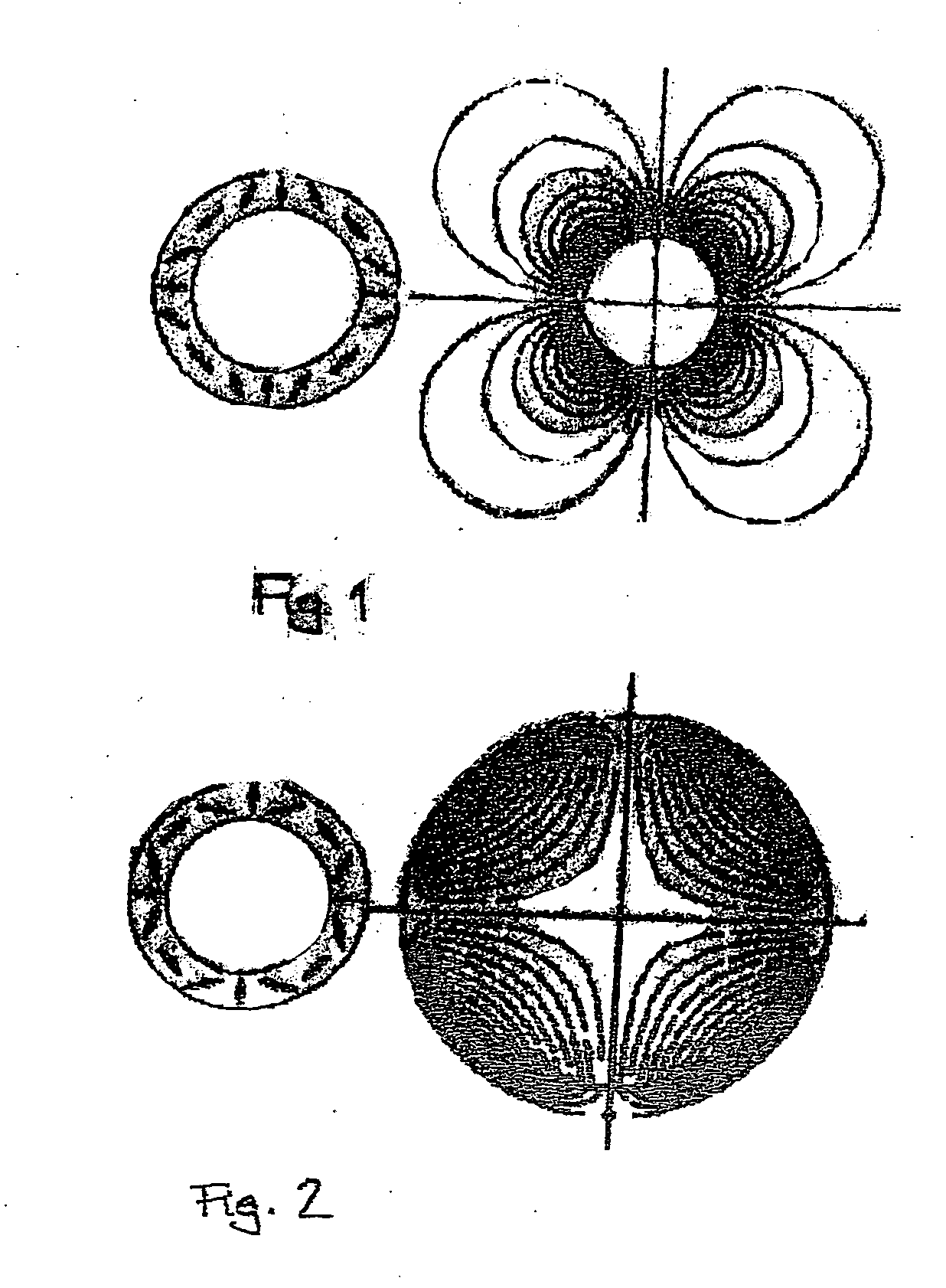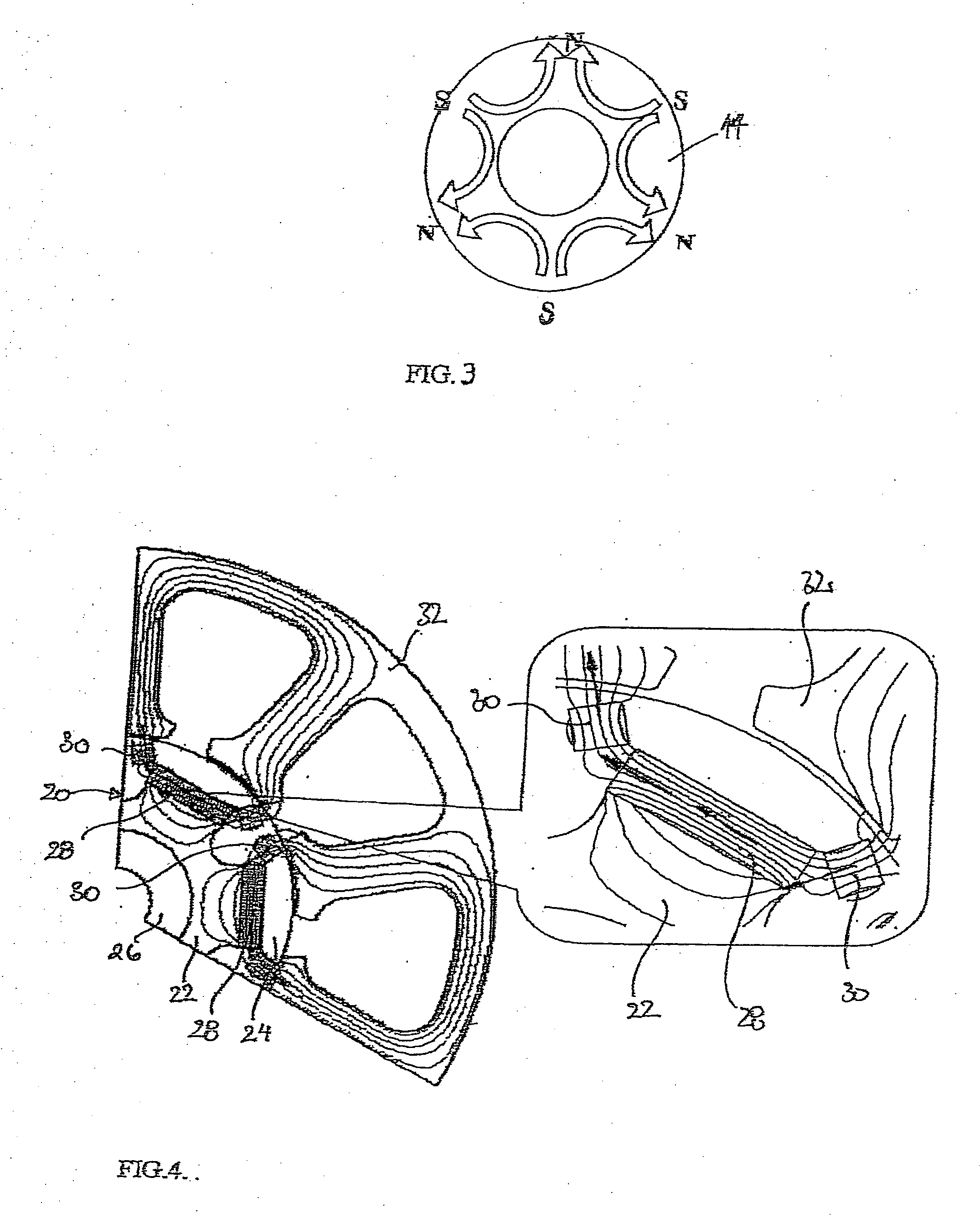Rotor arrangement for an electric machine
a technology of electric motors and rotors, which is applied in the direction of dynamo-electric machines, magnetic circuit rotating parts, magnetic circuit shapes/forms/construction, etc., can solve the problems of excessive amount of magnetic material and large quantity of magnetic material, and achieve the effect of reducing the volume of magnetic material and reducing the cost of the rotor
- Summary
- Abstract
- Description
- Claims
- Application Information
AI Technical Summary
Benefits of technology
Problems solved by technology
Method used
Image
Examples
Embodiment Construction
[0025]FIG. 1 and 2 show the magnetization and the corresponding flux line distribution for the permanent magnet ring of a rotor arrangement according to an inner rotor motor configuration (FIG. 1) and an outer rotor motor configuration (FIG. 2) respectively. In the case of a Halbach magnetization, the flux line distribution in the air gap between rotor and stator is inherently sine shaped, as a result of which theoretical minimum cogging torque is achieved and an essentially sine-shaped EMF waveform is produced. Since, due to the Halbach magnetic arrangement, the magnetic flux within the rotor is led through the magnets with hardly any leakage flux and thus practically shielded from one side, the permanent magnet ring can be mounted onto a rotor body that does not need an iron back yoke, as can be seen from the flux line distribution in FIG. 1 and 2.
[0026]FIG. 3 schematically shows the multi-pole magnetization of a magnetic ring 14 of a rotor arrangement having Halbach magnetizatio...
PUM
 Login to View More
Login to View More Abstract
Description
Claims
Application Information
 Login to View More
Login to View More - R&D
- Intellectual Property
- Life Sciences
- Materials
- Tech Scout
- Unparalleled Data Quality
- Higher Quality Content
- 60% Fewer Hallucinations
Browse by: Latest US Patents, China's latest patents, Technical Efficacy Thesaurus, Application Domain, Technology Topic, Popular Technical Reports.
© 2025 PatSnap. All rights reserved.Legal|Privacy policy|Modern Slavery Act Transparency Statement|Sitemap|About US| Contact US: help@patsnap.com



